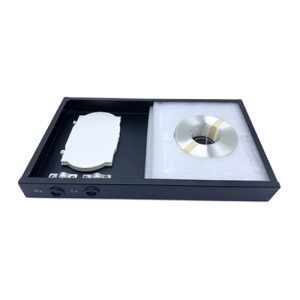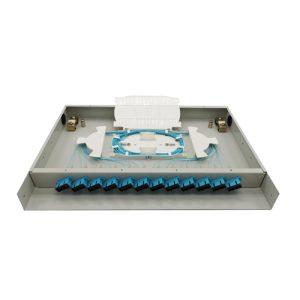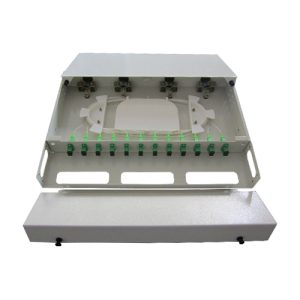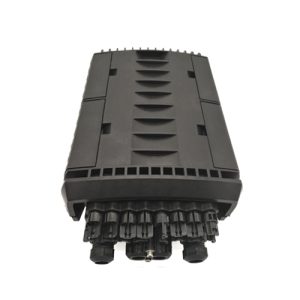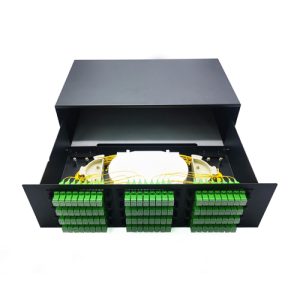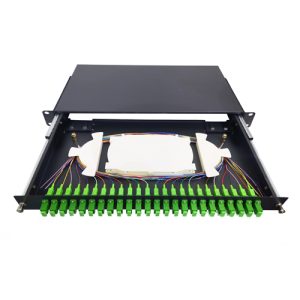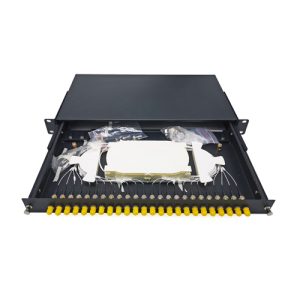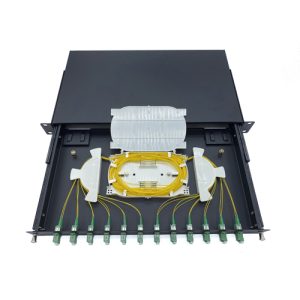FTTx Network
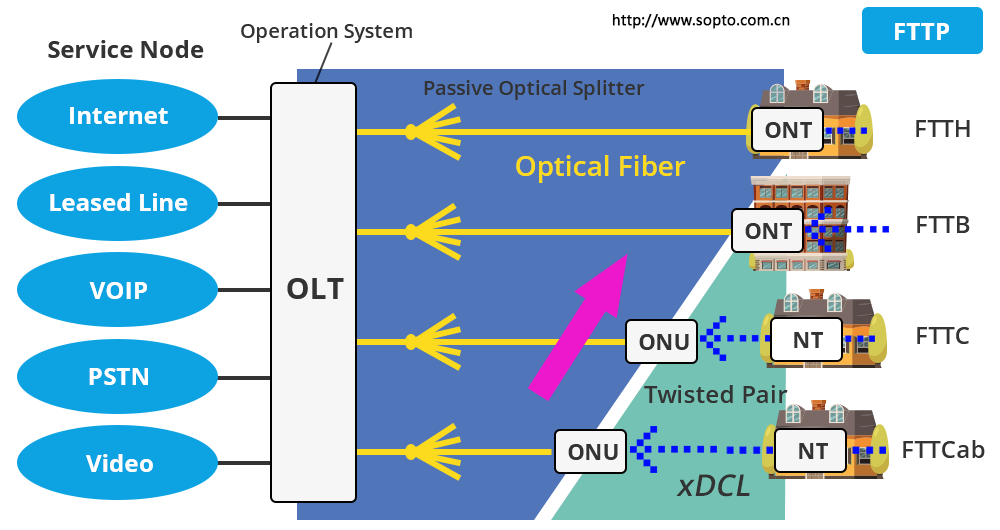
What is FTTX network?
FTTx is the abbreviation of “Fiber To The x”, a general term for all kinds of fiber optic communication networks, where x represents the destination of the fiber optic line. According to the distance of fiber to the home, there are probably the following kinds: FTTH, FTTP, FTTB, FTTC, FTTD, FTTN, FTTR, FTTA, FTTO, FTTSA, etc. The U.S. operator Verizon collectively called Fiber To The Premise (FTTP) for both FTTB and FTTH.
Fiber to the home (FTTH) is a dream that people have been pursuing for 20 years and exploring the direction of technology, but due to the cost, technology, demand and other obstacles, it has not yet been promoted and developed on a large scale. Because of this, many skilled people regard FTTx (especially fiber-to-the-home and fiber-to-the premises) as an important turning point for the recovery of the optical communications market. And it is expected that FTTH network will have greater development in the next few years.
1.1 FTTC
FTTC is the most important form of service at present, mainly for the residential area of the user as a service, the ONU equipment is placed in the roadside chassis, the use of coaxial cable out of the ONU to transmit CATV signals or twisted-pair transmission of telephone and Internet access services. the transmission rate of FTTC is 155Mb/s. The interface between FTTC and the switching office adopts the interface standard V5 developed by the ITU-T.
1.2 FTTB
There are two kinds of FTTB according to the service object distinction, one is the user service of the apartment building, and the other is the company line number service of the commercial building, and both of them will set the ONU in the basement of the building’s distribution box, only the ONU of the apartment building is the extension of the FTTC, while the commercial building is for the medium and large-scale enterprise units, and must improve the transmission rate to provide high-speed data, e-commerce, video conferencing and other broadband services. broadband services.
1.3 FTTH
As for FTTH, ITU considers the situation where the optical converter (or media converter MC) from the end of the optical fiber to the user’s desktop is no more than 100 m. FTTH extends the distance of the optical fiber to the end-user’s home, which makes it possible to provide a variety of different broadband services within the home, such as VOD, shopping at home, and home schooling, etc., and provides more business opportunities. If paired with WLAN technology, it will make broadband and mobile combination, then it can achieve the vision of the future broadband digital home.
1.4 FTTP
FTTP (fiber to the premise, fiber to the user’s location), North American terminology, FTTP will be fiber optic cable has been extended to the home or business. Because fiber can provide more bandwidth than the twisted pair or coaxial cable used in the last mile, carriers use it to provide voice, video, and data services.FTTP has speeds of 25M to 50Mbps or higher, compared to other types of broadband services, which have maximum speeds of about 5M to 6Mbps.In addition, FTTP also supports fully symmetrical services.
1.5 FTTZ
FTTZ is Fiber To The Zone. FTTx technology is mainly used for access network fiber optic, the scope from the regional telecommunications room of the local equipment to the user terminal equipment, the local equipment for the Optical Line Terminal (OLT), the user equipment for the Optical Network Unit (ONU).
Classification Of FTTx Technology
There are two main ways to connect ONUs with optical fiber, one is the point-to-point form topology (Point to Point; P2P), which uses one fiber from the central office to each subscriber; the other is the use of the point-to-multipoint form topology (Point to Multi-Point; P2MP) of Passive Optical Network (PON), whose topology is shown in Figure 2).
For an unprotected FTTx system with N end-users at a distance of M km, 2N optical transceivers and NM km of fiber are required if the point-to-point scheme is used. However, if the point-to-multipoint scheme is used, N +1 optical transceivers, one or more (depending on the size of N) optical splitters, and about M km of optical fiber are required. At this point, using the point-to-multipoint scheme greatly reduces the number of optical transceivers and the amount of optical fibers, and reduces the rack space required by the central office, which has an obvious cost advantage.
2.1 Point-to-point FTTx solutions
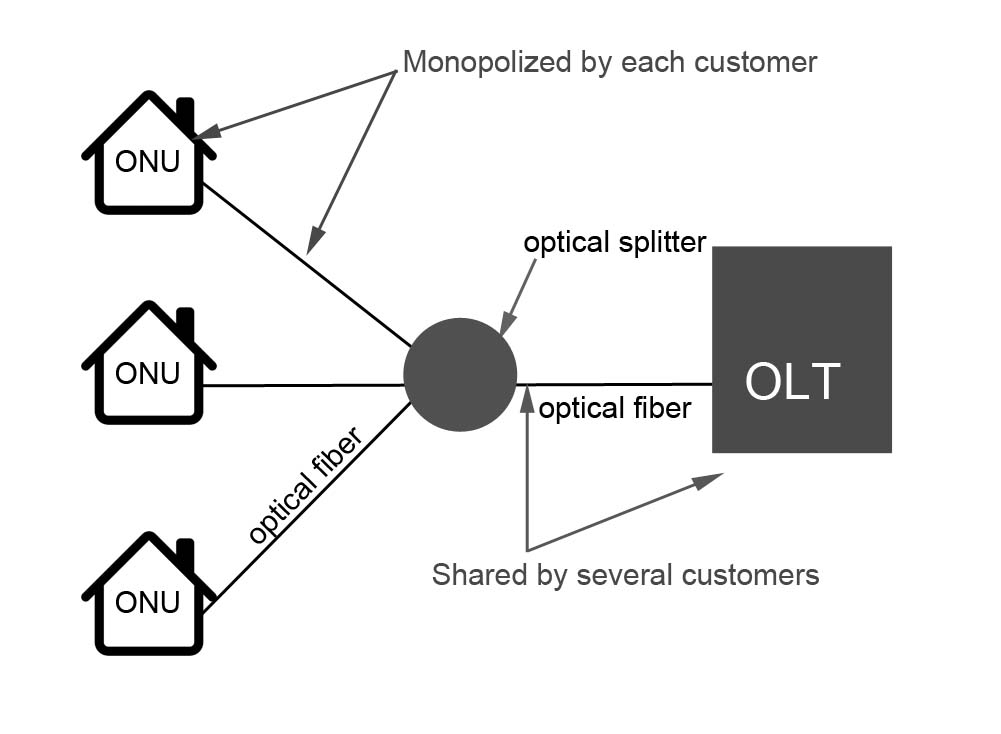
Point-to-point direct fiber connections is easy to manage, without complex uplink synchronization techniques and automatic identification of terminals. In addition, the entire uplink bandwidth can be used by a single terminal, which is very conducive to bandwidth expansion. However, these advantages do not offset its disadvantages in terms of device and fiber cost.
Ethernet + Media Converter is a transitional point-to-point FTTH solution that uses a Media Converter (MC) to convert electrical signals into optical signals for long distance transmission. The MC is a purely optical/electro-optical/electro converter that does not process the signal packets and cost effective. The advantage of this scheme is that for the existing electrical Ethernet devices only need to add the MC. MC method of topology as shown in Figure 3. Do not have to replace the network card to support fiber optic transmission, only need to add MC, so that users can reduce the cost of upgrading, is a point-to-point FTTH program during the transition to the network solution. It was once the mainstream of FTTH in Japan because its technical architecture was quite simple, inexpensive, and directly integrated with Ethernet networks.

2.2 Point-to-Multipoint FTTx Solution
In the optical access network, if the optical distribution network (ODN) consists of passive devices, not including any active nodes, this optical access network is PON. The architecture of the PON is mainly from the fiber optic line terminal equipment OLT downstream optical signals, through an optical fiber through passive devices Splitter (optical splitter), the optical signal splitting and broadcasting to the various subscriber terminal equipment ONU/ONT. This significantly reduces the network room and equipment maintenance costs, and saves a lot of cable resources and other construction costs, PON has become the latest technology of FTTH. This significantly reduces the network room and equipment maintenance costs, but also saves a lot of fiber optic cable resources and other construction costs, PON has become the latest hot technology FTTH.
2.3 PON Access Network Technology
PON, as an access network technology, is positioned as the “last mile”, i.e., the solution between the service provider, the telecommunication bureau and the business or home user.
With the increasing number of broadband applications, especially the rise of video and end-to-end applications, the demand for bandwidth is getting stronger and stronger. In North America, the bandwidth demand per user will reach 20-50Mb/s in 5 years and 70Mb/s in 10 years. with such high bandwidth demand, traditional technologies will not be able to cope with the task, while PON technology can make a big difference.
EPON is proposed by the EFM (Ethernet in the First Mile) study group established by the IEEE 802.3 working group in November 2000. EPON is a combination of several best technologies and network architectures. EPON uses Ethernet as a carrier, adopts a point-to-multipoint structure, and uses passive fiber optic transmission mode. EPON also provides certain operation, maintenance, and management (OAM) functions.
EPON technology and existing equipment has good compatibility. Moreover, EPON can also easily realize the smooth upgrade of bandwidth to 10 Gbit/s. Newly developed Quality of Service (QoS) technologies enable Ethernet support for voice, data and image services. These technologies include full-duplex support, prioritization (p802.1p) and virtual local area networks (VLANs). In addition, it has a lower transmission efficiency compared to GPON.
In 2001, the FSAN group initiated another standards effort aimed at standardizing PON networks that operate at rates higher than 1Gbit/s. This work is called Gigabit PON (GPON). GPON in addition to supporting higher rates, but also to support a variety of services with high efficiency, to provide rich OAM&P features and good scalability. Representatives of operators in most advanced countries have proposed a set of “Gigabit Service Requirements” (GSR) documents as one of the standards to be submitted to the ITU-T; this in turn has become the basis for proposing and developing GPON solutions. This demonstrates that GPON is an operator-driven solution designed to meet the exact needs of the consumer and is trusted by product users.
Classification of Fiber Optic Circuits
FTTx is divided into three categories in the design of transmission layer, which are Duplex dual-fiber bidirectional loop, Simplex single-fiber bidirectional loop and Triplex single-fiber three-way loop. The Duplex loop is a two-way fiber optic connection between the OLT end and the ONU end, one way for downstream, the signal is from the OLT end to the ONU end, and the other way for upstream, the signal is from the ONU end to the OLT end.The Simplex Single Fiber Loop is also known as the Bidirectional, or BIDI for short, which is only a one-way fiber optic connection between the OLT end and the ONU end. Simplex single-fiber loop, also known as Bidirectional, or BIDI for short, uses only one optical fiber to connect the OLT end and the ONU end, and transmits the upstream and downstream signals with optical signals of different wavelengths using the WDM method. This use of WDM transmission of single-fiber loop and Duplex dual-fiber loop compared to reduce the use of fiber by half, can reduce the cost of the ONU user side, but the use of single-fiber mode in the optical transceiver module to be introduced into the photosynthesis optical unit, the architecture is more complex than the use of dual-fiber mode of optical transceiver module. BIDI uplink signal selection of 1260 to 1360 nm band laser transmission, the downlink is used 1480 to 1580 to 1580 nm band laser transmission, the downlink is used. The uplink signal of BIDI is transmitted by laser in the 1260-1360 nm band, while the downlink is transmitted by laser in the 1480-1580 nm band. In a dual-fiber circuit, both upstream and downstream signals are transmitted using the 1310 nm band.
The FTTH market in China mainly uses triple-wavelength PONs, where one wavelength (1550 nm) is used to transmit broadcast TV and two wavelengths (1310/1490 nm) are used to transmit both upstream and downstream data, which requires what is known as a Triplex architecture. The Triplexer also becomes a key component needed for FTTH system, which is mainly used in FTTC (Fiber to the Curb), FTTZ (Fiber to the Zone) FTTB (Fiber to the Building or each floor of the cell), FTTH (Fiber to the Home), FTTD (Fiber to the Desk).

